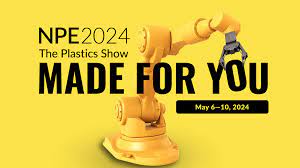Many OEMs lament that the U. S. economy is treading water. It could be worse. Consider the situation in the Euro zone, which is mired in a recession and facing unemployment above 11%, a debt crisis, and nagging questions about the future of its currency. Despite the turmoil, Italian machine builders are holding their own, according to data from UCIMU, the Italian machine-tool association. Production and exports for the group rose at double-digit rates last year and, while recent orders have declined, the association still predicts export sales for 2012 will be up 12.3%.
The Italian machine-tool sector remains competitive for a number of reasons, says UCIMU President Luigi Galdabini, speaking at this year’s Lamiera exhibition in Bologna, Italy. First, most manufacturers don’t mass produce standard models. Rather, they concentrate on building one-off ma- chines that solve specific problems. The expertise of Italian entrepreneurs lies in overcoming technical hurdles and craft- ing special designs that improve efficiency, speed, precision, and productivity. Some manufacturers might invest thou- sands of engineering hours yet only produce a single — albeit extremely complex — machine a year, notes Galdabini.
This differs from the approach taken in other countries, he says. “In China, volume is growing rapidly, the level of technology is good, but special solutions — zero.” It’s much the same in Japan, he adds, where companies produce high- quality machine tools in large volumes, but custom-made equipment is not their strength. “We have a different kind of competence. Italians are the champions of special machines,” says Galdabini. “We are innovative and competitive, and we are artists, a little bit.” An advantage is that the average manufacturer has only about 60 to 70 employees, and this lets them focus on problem solving and gives them the flexibility to customize and personalize the end product to exactly match customer requirements.
“We are not in the business of copying somebody else and being lower in price and quality. This is not the Italian style. We will always get beat by China and India on cost, with simple machines. Our aim is to be tops in performance, quality, and innovation,” Galdabini says.
{pagebreak}
This strategy succeeds because customer requirements have changed in recent times. “For sure they want to have productivity and availability of the machine,” he says, that’s a given. But every company is becoming increasingly specialized and exacting in their needs, to differentiate their products from the competition, explains Galdabini. This, in turn, requires the customized production equipment his members provide.
And it’s not just a matter of bolting on different components — entire systems and processes need to be specially engineered. “More and more the customer asks for flexibility in how the machine works. That means setup time reduced to zero or almost zero,” he says, though every part it makes is 40 MACHINE DESIGN.com SEPTEMBER 6, 2012 different. The equipment must be easy to operate regardless of how complex and sophisticated. “The end user may not have a skilled workforce, or very few workers, or high turnover, or little time for training, so the machine itself has to be intelligent. It can’t require an engineer to operate.”
Though custom-made equipment must be tailored for the application, using standard modules and subsystems can help minimize development time, notes Galdabini. “The customer wants a unique solution, but it doesn’t mean you can afford to totally redesign a machine every time.” Otherwise, lengthy development times and excessive costs will be the death of your business, he cautions.
{pagebreak}
Galdabini sees investment in R&D as critical, but notes most research by Italian companies is done hand in hand with the customer as a project progresses. He stresses that technology is the backbone of most firms, which, on average, count more than one-third of their employees as engineers, technicians, designers, or software developers. “In general, we don’t have a dedicated R&D team just studying basic tech- nology for the future. We typically turn to outside experts for specialty research,” he says.
Many of these companies are family owned. One question is whether the next generation is up to the task of building on current successes. For sure, engineering education has changed in some ways, compared with the past, says Galdabini. Nonetheless, he feels today’s young engineers are technically qualified to handle complex projects, once they gain the necessary experience.
“What is changing is the passion,” he says. The problem is to find good people with a quality education, who are willing to work and are enthusiastic about the job. “They need to feel as if their signature is on the product and are proud to say, ‘That is my machine.’ For small and medium-size companies, it counts a lot. That’s the value we bring to the customer. If you have passion for your job, you will do well. If you don’t, stay home.”
Another key to riding out the economic crisis is that the Italian machinery sector exports more than 70% of its output, with Germany the biggest market for many manufacturers. Galdabini admits a deep concern with the continued decline in domestic orders. In a recent statement, he says this demonstrates a structural weakness in the Italian market, which has drastically reduced its investments in production technology. To avoid an irreversible loss of competitiveness, Galdabini calls on the Italian government to aid exporters, offer tax credits for investments in new machinery and, at the least, implement provisions for quicker depreciation of capital goods.


























